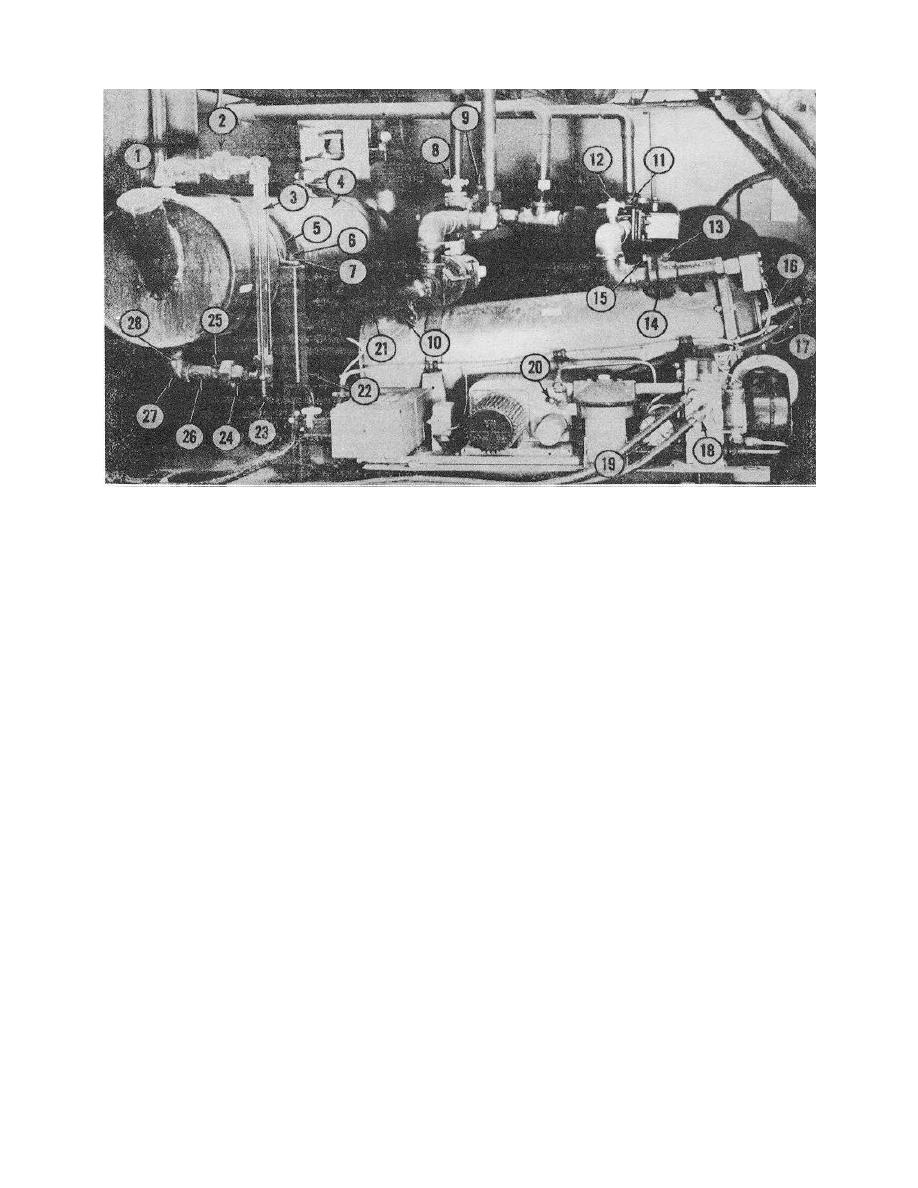
TM 5-3655-210-12
1.
Filler cap
11.
Conversion heater diversion valve
20.
Vibrator switch
2.
Union nut
12.
Anti-freeze bleed-off petcock
21.
Heater fluid line
3.
Sight glass
13.
Nut
22.
Saddle stand
4.
Expansion tank
14.
Gasket
23.
Drain cock
5.
Saddle stand clamp
15.
Cap screw
24.
1/3 union
6.
Cap screw
16.
Spark plug
25.
1/3 union
7.
Nut
17.
Coupling nut
26.
Nipple
8.
Anti-freeze bleed-off petcock
18.
Tube nut
27.
Elbow
9.
Compartment heater diversion valve
19.
Fuel pressure gage
28.
Nipple
10.
Tube nut
Figure 2-5. Conversion heater, installed view.
d. Since it is intended that the electric motor be
rapidly, due to the drop in pressure and temperature, it
forms C02 snow. This snow, when compressed into
used as the power source whenever electric power is
blocks or cubes, forms dry ice. Dry ice, in solid forms
available, circuitry has been installed to prevent the
and at atmospheric pressure sublimates, remaining at
gasoline engine operating if the conversion and storage
110F. (-76C) until it has disappeared. It is excellent for
unit is connected to 208 volt power. Operation of the
certain refrigeration purposes, because it will neither
gasoline engine, under either manual or automatic
control, requires that the power cable be disconnected.
of the chief fire extinguishing agents in use today. It is
e. C02 gas, when pure, is colorless, odorless, and
also used for inflatable equipment and as a propellant or
expelling agent. Since C02 in addition to being heavier
1.52 times as heavy as air. It is the by product of the
than air, is both invisible and odorless, it presents a
combustion of all materials containing carbon. It can be
particular hazard.
It will tend to collect in low,
condensed into a colorless liquid and stored in this state,
unventilated places. The fact is obvious that the more
under pressure, in cylinders. The pressure of the C02 in
of any gas, poisonous or not, that is present, the less
the cylinders is relative to the surrounding temperature.
breathable oxygen there will be present. Men going into
Liquid C02 will return to a gaseous state at a
these conditions or places, or left there run the risk of
temperature of 87.7F. (31C.). It cannot be a liquid
above this temperature, regardless of the pressure that
is applied. When CO2 liquid is allowed to expand
2-6


